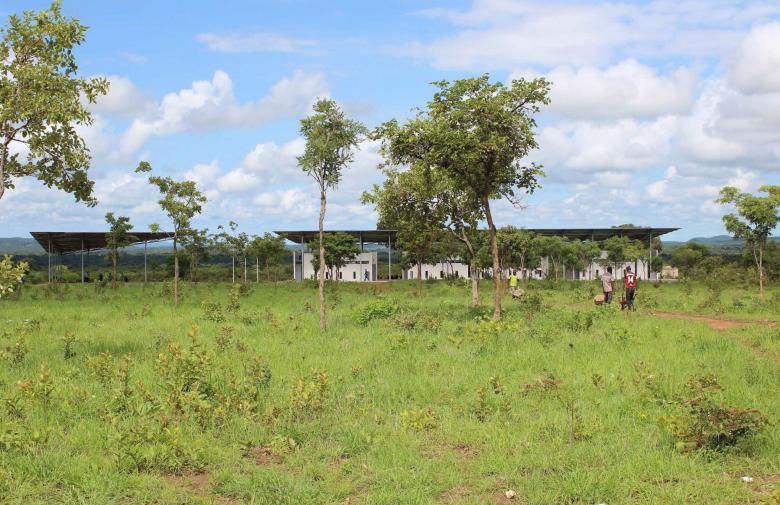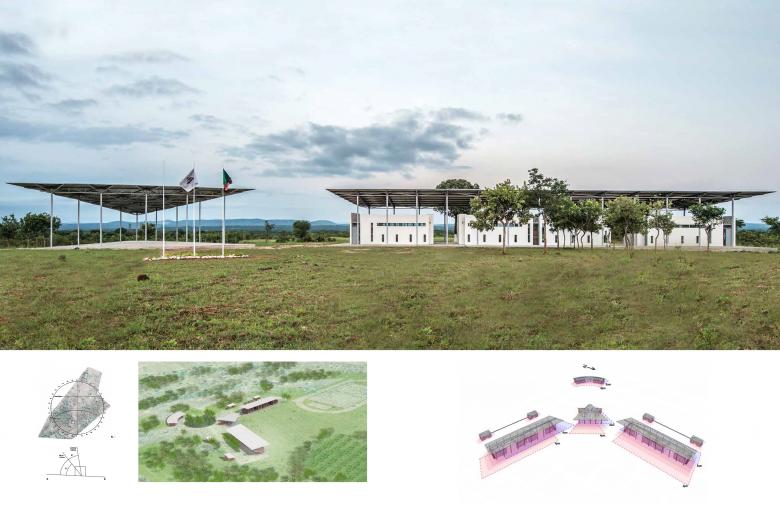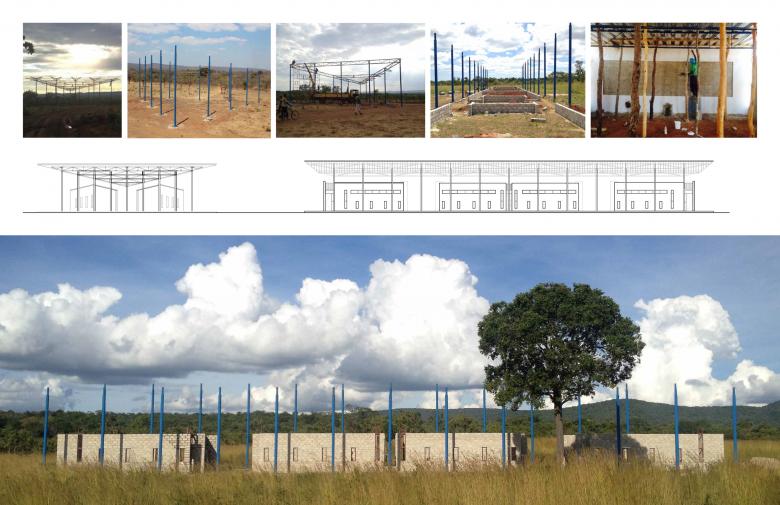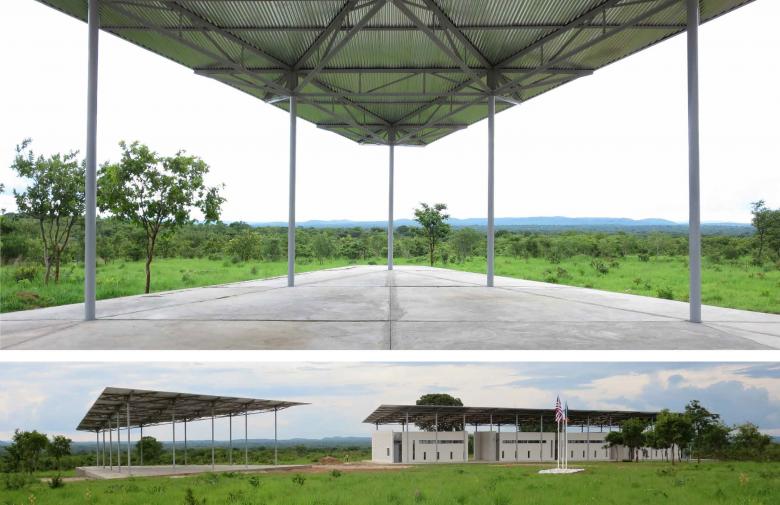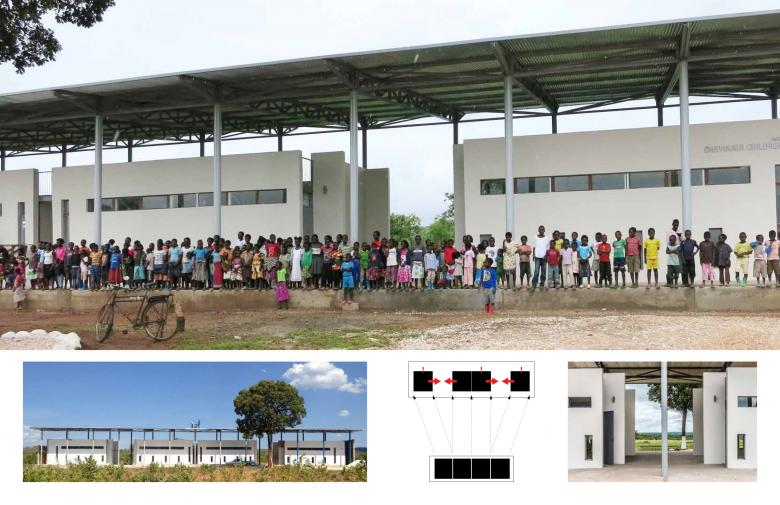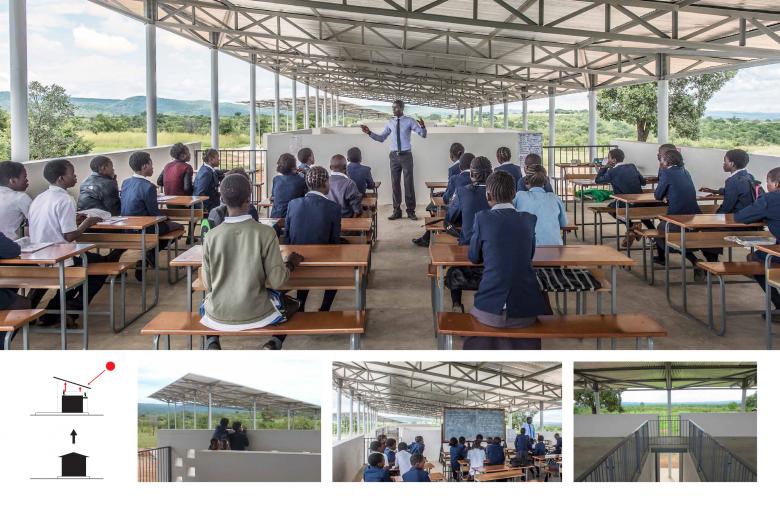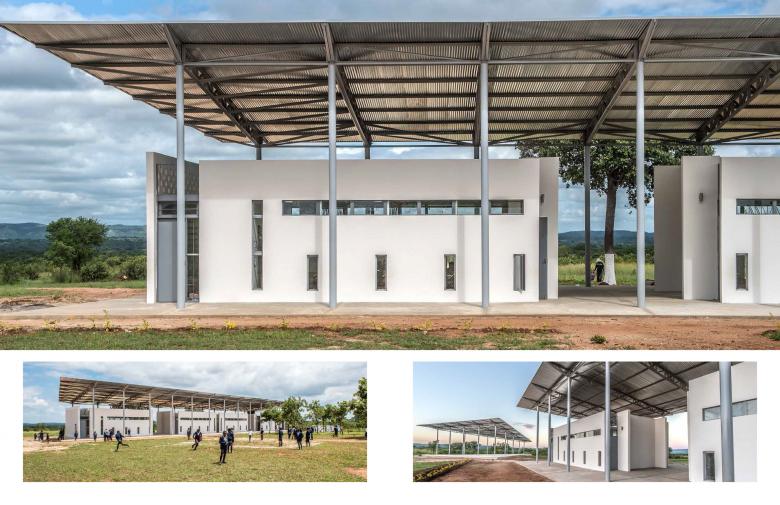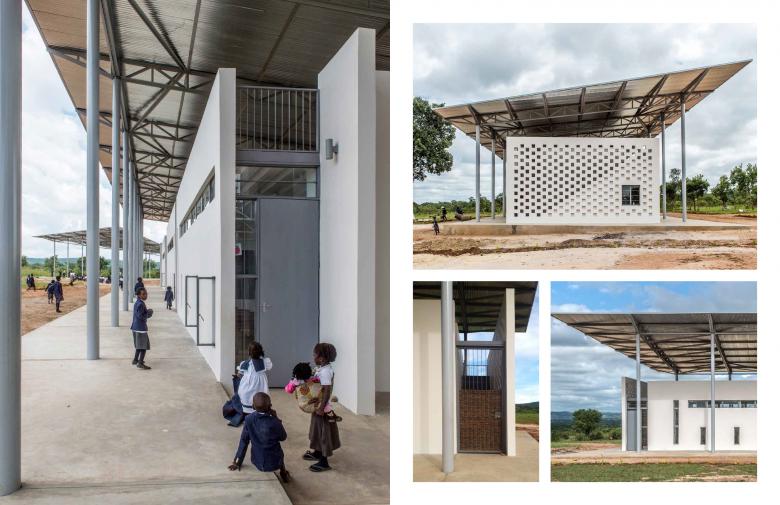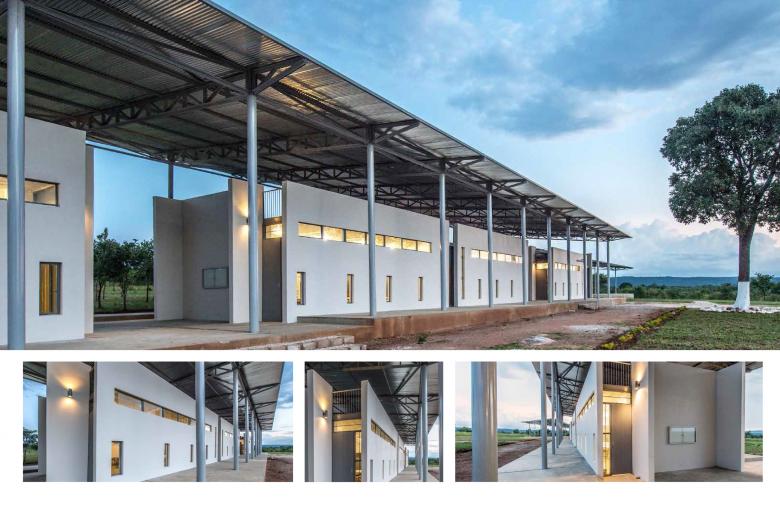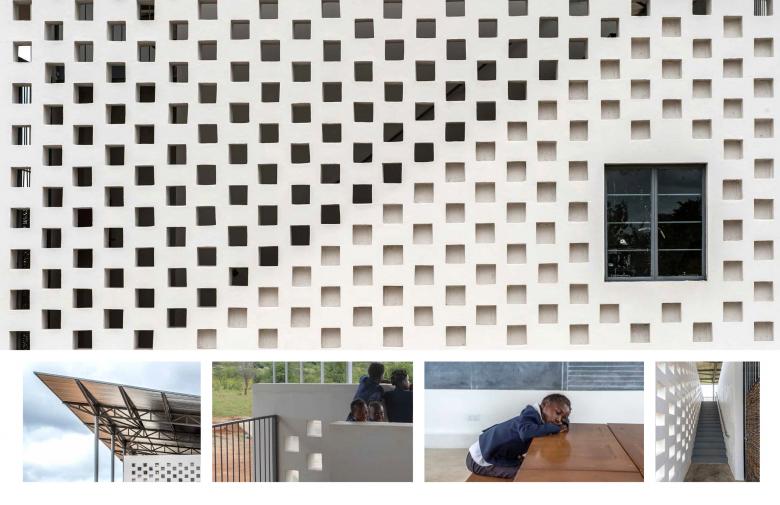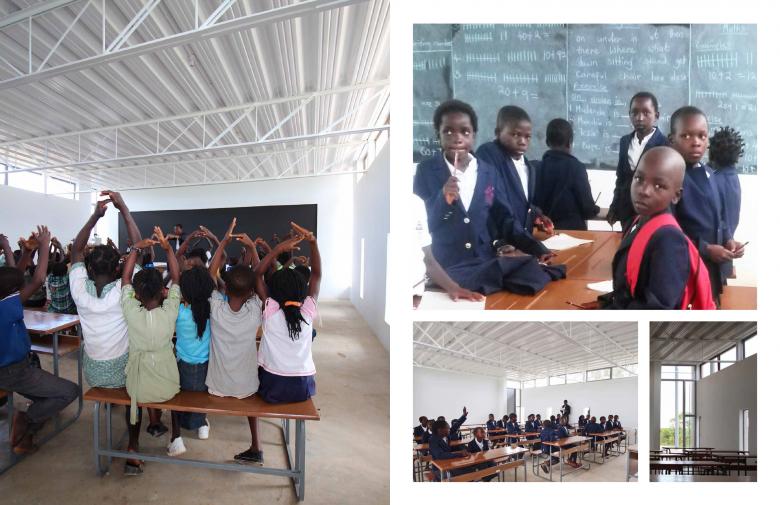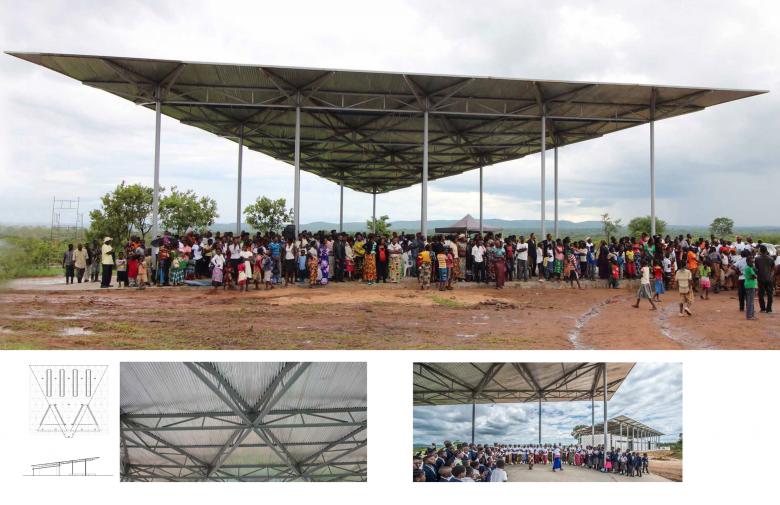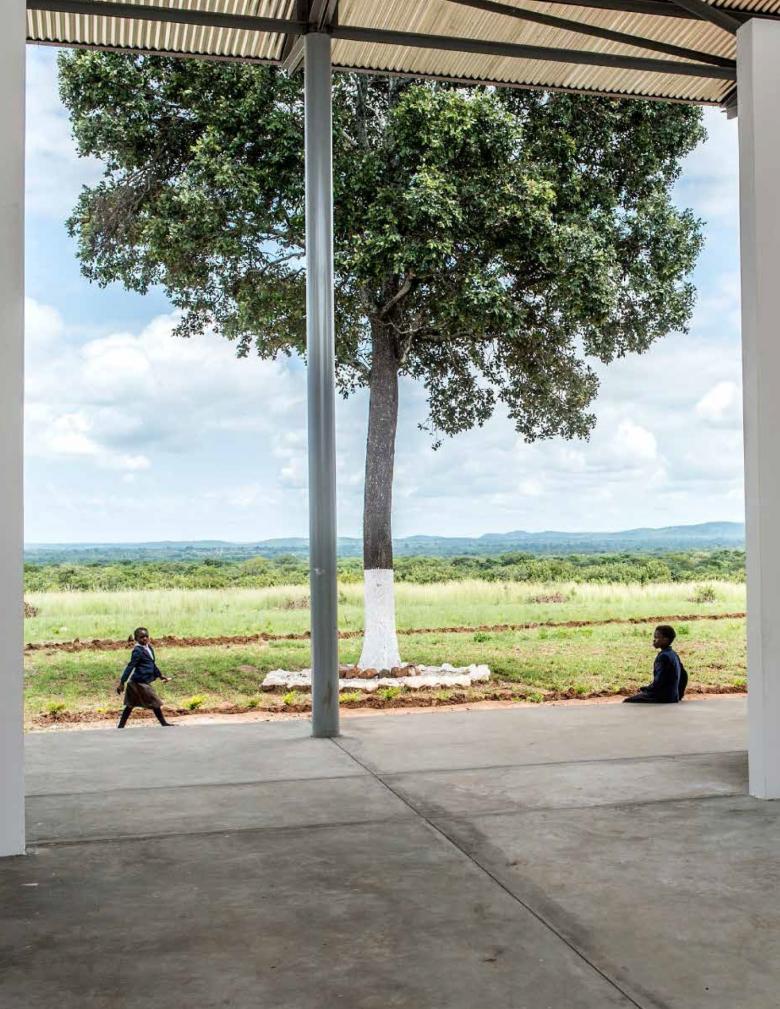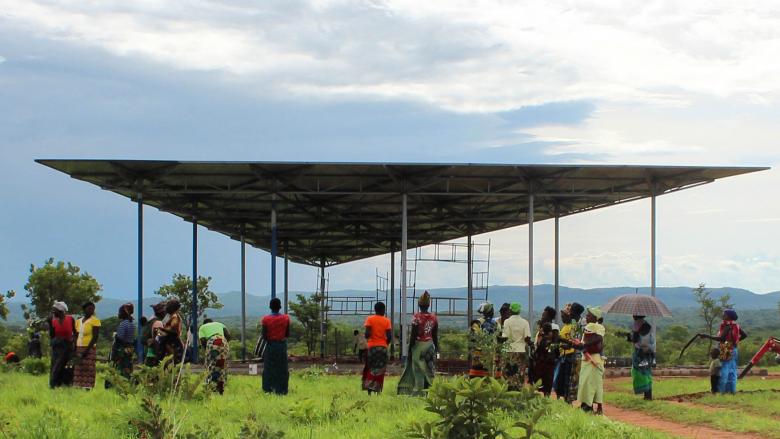Chipakata Children’s Academy
13. julho 2015
What started as an effort to provide bicycles for some children in Zambia turned into something more substantial: a school, a health clinic, teacher housing, and landscaping on 100 acres in Chipakata Village. Designed by a trio of New York architects – Susan Rodriguez, Frank Lupo, Randy Antonia Lott – for the 14+ Foundation, the recently completed school combines local architecture traditions with new technologies. The architects answered some questions about the project.
(Click images for larger views.)
What were the circumstances of receiving the commission for this project?
In 2011 the founder of the school, Joseph Mizzi, traveled to Zambia to participate in a program to provide bicycles to school-aged children. He realized that the need for bicycles was due to the long distances the children in local villages had to travel to school. This inspired him to consider creating a foundation that would build and operate schools and orphanages in rural African communities to alleviate this problem. In 2012, he co-founded the 14+ Foundation with native Zambian and fashion stylist Nchimunya Wulf. In 2013 Joseph assembled a small group of architects and a structural engineer, many of us fellow board members of the Architectural League of New York, to lead a pro bono design effort. Our work included master planning, design and overseeing construction of a new school in Chipakata Village, Zambia.
Please provide an overview of the project.
The Chipakata Children’s Academy is a new primary school in Zambia, Africa. It is the first initiative of the 14+ Foundation, a New York City-based non-profit organization established in 2012. The design for the new school has realized the Foundation’s mission to develop, build and operate schools and orphanages in rural African communities. The site in Chipakata Village is approximately 100 kilometers east of Lusaka, Zambia’s largest city. Situated on level topography with views to the surrounding hills east and west, the project defines a sense of place and community for the Village. Locating the school within the Village has dramatically reduced the distance the children must walk to school each day, as the nearest school is seven kilometers away. The Academy provides a comprehensive primary school education, grades 1-7, for children in seven villages in and around the Chipakata Village community.
The first phase of the project, which opened in January 2015, includes a classroom building, community pavilion, administrative offices and teachers’ housing. Nearby agricultural fields dedicated to generating food and income support the operation of the school and ensure long-term economic sustainability for the project. Local village residents were key participants throughout the development and construction process. Phase two of the project will include another classroom building and a health clinic.
What are the main ideas and inspirations influencing the design of the building?
Referencing regional school planning typologies, the design of the classroom structure transforms the standard model to create a new paradigm in response to the local climate and solar orientation as well as providing greater flexibility for use of the building throughout the day. Use of the school in the evening by village residents was also considered. The building provides for a greater variety of spaces for collaboration and versatility for formal and informal teaching and learning with ten spaces compared to the four rooms found in the typical classroom prototype. This is achieved by breaking down the monolithic volume of the typical classroom bar building and introducing open space for collaborative activity between classrooms. Additionally, elevating the roof canopy above the masonry base allows for an upper level accessible by stair, with open-air spaces directly above each of the four classrooms. Informed by the local climate and solar conditions, the window openings and roof canopy are configured to maximize daylight within the classrooms. Clerestory windows are integrated into all the classrooms with a continuous roof overhang serving to protect spaces on both levels from harsh solar gain during the summer months.
Adjacent to the classroom building is a community gathering space, a triangular shaped structure providing shelter from the sun and rain and a flexible space for eating, gathering and community celebrations. The construction of the buildings is based on a modular approach to both the masonry units of the classrooms and the repetitive structure of the roof canopies. All materials were locally procured and assembled on-site. The textural quality of the unitized masonry construction is expressed in the screen walls that enclose the stairs at both ends of the building.
Were there any significant challenges that arose during the project? If so, how did you respond to them?
The Village of Chipakata is isolated, only accessible by dirt roads. Access required traversing a waterway that had not been spanned. As part of the initial site preparations five miles of road were improved to allow construction vehicles to access the site. A bridge was built to traverse the waterway. A well was drilled for water.
The parents of the village children were trained and put to work at all tasks from preparing the site, excavating foundation pits by hand, hand-mixing and installing all the concrete used on the project, assisting with hand-setting structural steel components, executing the masonry block work, installing windows, finishing plaster and finally painting the building. This became a source of great pride among the village parents, who were building a school for their children with their own hands.
How does the building relate to contemporary architectural trends, be it sustainability, technology, etc.?
We began the site planning process with a sensitivity to addressing climate and sustainability through the building’s appropriate solar orientation and the use of local materials. The design draws upon principles of indigenous architectural traditions of the region. The classroom structure was oriented to face away from the intense African sun and to allow the sloped roof plane to provide effective shielding of the classroom blocks from the sun throughout the day. That same roof surface is outfitted with solar panels to provide electricity and illumination in the evening.
How did you approach designing for Zambia and how would you describe the process of working on the project there?
At the onset of the design process the team established a set of overarching objectives for the project:
1. Develop a comprehensive masterplan for the 100-acre site that would ultimately include a school, faculty housing and supporting landscape zones for recreation and agriculture.
2. Design a school that would employ the most fundamental principles of sustainable design in determining the school’s siting, solar orientation, use of locally available materials and methods of construction.
3. Design a school and its classrooms in such a manner as to embody the values of simplicity and utility— creating a design that is “of” the village and utilize the simplest of construction methods so that the village could be employed to build it.
4. Incorporate the understanding of proportion, light, shade views and prevailing winds as primary guiding principles of design.
The building process had to be reduced to fundamental simplicities of construction. Much of the design thinking and coordination at the onset had to take into account that we were building a school using an unskilled labor force to achieve a fairly refined building. The process required training and coordination and patience.
How would you describe the architecture of Zambia and how does the building relate to it?
The vernacular architecture of Zambia and of the Village of Chipakata consists of grounded earthen shelters topped and enclosed by a lightweight woven roof of plant material to shade and protect against the elements. The design interprets and builds upon these components and characteristics to create a similarly essential, minimal and functional approach. The classrooms are the “grounded” elements elevated on a plinth to signify their importance in the endeavor of education. The details of the design developed in response to character of the indigenous earthen shelters and the patterning and rich variety of the regional textile designs. This can be seen in the decorative masonry screen walls at the ends of the classroom bars, the triangular geometry of the roof structure, as well as in the gates to the second floor rooftop classrooms where vines and saplings are woven into the steel. By creating a building of physical and construct-able simplicity shaped by both programmatic needs and climatic necessity, the school adheres to the principles of the indigenous architecture of the region.
Email interview conducted by John Hill.
Chipakata Children’s Academy
2015Chipakata Village, Zambia
Client
14+ Foundation, Inc., New York, NY
Architects (Design Principals)
Susan Rodriguez (Ennead Architects)
Frank Lupo
Randy Antonia Lott
Design Team
Fabian Bedolla (on-site project architect), Hiroko Nakatani (Ennead Lab)
Structural Engineer
Nat Oppenheimer (Silman)
Architect of Record & Contractor
Dora Yapi
Construction Manager
14+ Foundation, Inc., Joseph Mizzi (Sciame Construction), Fabian Bedolla (on-site Construction Manager)
Site Area
Approx. 100 acres
Building Area
20,000 sf
Photographs
Rob Duker, Fabian Bedolla, Gord Ray and Joseph Mizzi
